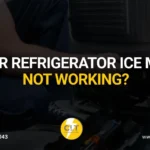Your home’s heating, ventilation, and air conditioning (HVAC) system works tirelessly behind the scenes to keep you comfortable year-round. It regulates temperature, manages humidity, and filters the air you breathe. However, like any complex mechanical system, HVAC units can develop problems over time. When these issues arise, they can disrupt your daily life, impact your energy bills, and even affect your health.
Understanding common HVAC issues is crucial for every homeowner. Whether you’re dealing with inconsistent temperatures, strange noises, or unexpected spikes in your energy costs, recognizing the signs of HVAC problems early can save you time, money, and discomfort.
All That Could Be Wrong With Your HVAC
Dirty Air Filters
One of the most prevalent HVAC issues is also one of the easiest to prevent: dirty air filters. These unassuming components play a vital role in your HVAC system’s efficiency and your home’s air quality.
When air filters become clogged with dust, pollen, and other particles, they can cause:
- Reduced airflow, making your system work harder
- Higher energy bills due to decreased efficiency
- Poor indoor air quality
- Increased wear and tear on your HVAC system
Solution: Replace or clean your air filters every 1-3 months, depending on usage and air quality in your area. This simple task can significantly improve your system’s performance and longevity.
Thermostat Troubles
Your thermostat is the brain of your HVAC system. When it malfunctions, it can lead to a host of HVAC common issues. Common thermostat problems include:
- Dead batteries
- Incorrect settings
- Faulty wiring
- Improper placement (e.g., in direct sunlight or near heat sources)
Solution: Start by checking the basics: replace batteries, verify settings, and ensure proper placement. If problems persist, consider upgrading to a programmable or smart thermostat for better control and energy savings.
Little To No Airflow
Poor airflow is a frequent complaint among homeowners and can stem from various sources:
- Blocked vents or registers
- Dirty ductwork
- Clogged filters
- Faulty blower motor
Insufficient airflow not only affects your comfort but can also strain your HVAC system, leading to increased energy consumption and potential breakdowns.
Solution: Regularly check and clear vents, schedule professional duct cleaning, replace filters as needed, and have your blower motor inspected during routine maintenance.
Refrigerant Leaks
Low refrigerant levels due to leaks can severely impact your system’s cooling performance. Signs of a refrigerant leak include:
- Inadequate cooling
- Ice buildup on evaporator coils
- Hissing sounds near the indoor unit
Solution: Refrigerant leaks require professional attention. An HVAC technician can locate and repair leaks, and then recharge the system to the proper level.
Dirty Coil Conundrums
A dirty condenser or evaporator coils are common HVAC issues that can significantly reduce your system’s efficiency and cooling capacity. This leads to:
- Increased energy consumption
- Reduced cooling performance
- Potential damage to other system components
Solution: Clean outdoor condenser coils annually and have indoor evaporator coils professionally cleaned as part of your regular maintenance routine.
Short Cycling
Short cycling occurs when your HVAC system turns on and off frequently, often before completing a full heating or cooling cycle. This can be caused by:
- An oversized HVAC unit
- Faulty thermostat
- Refrigerant issues
- Frozen evaporator coils
Short cycling not only affects your comfort but can also lead to increased wear and tear on your system.
Solution: This issue often requires professional diagnosis to identify the root cause and implement the appropriate fix.
Unusual Noises
Strange sounds coming from your HVAC system are never a good sign. Squealing, rattling, or banging noises may indicate:
- Loose or damaged parts
- Belt issues
- Motor problems
Solution: Schedule a professional inspection to identify and fix the source of the noise before it leads to more serious HVAC issues.
Dealing with Leaks
Water leaks can occur due to various HVAC issues, including:
- Clogged condensate drain lines
- Cracked drain pans
- Frozen evaporator coils
Left unaddressed, these leaks can cause water damage to your home and create ideal conditions for mold growth.
Solution: Regular maintenance can prevent many leak-related issues. If you notice water around your HVAC unit, call a professional to diagnose and fix the problem promptly.
Uneven Heating and Cooling
If some rooms in your home are consistently warmer or cooler than others, you might be dealing with:
- Ductwork issues (leaks or poor design)
- Inadequate insulation
- An improperly sized HVAC system
Solution: Start by inspecting and sealing ductwork, improving insulation where needed, and considering zoning systems for better temperature control throughout your home.
Ignition and Pilot Light Problems
For homes with gas furnaces, issues with the ignition system can prevent proper heating. Common problems include:
- Dirty pilot light
- Faulty ignition control
- Gas supply problems
Solution: Clean the pilot light regularly, replace faulty components as needed, and ensure proper gas flow. Always prioritize safety when dealing with gas appliances – when in doubt, call a professional.
Electrical Control Failure
Over time, wear and corrosion of electrical connections can lead to system malfunctions. This is particularly common in systems that frequently turn on and off.
Solution: Have a professional inspect and tighten electrical connections during regular maintenance visits to prevent these HVAC issues.
The Importance of Preventive Maintenance
Many common HVAC issues can be prevented or caught early through regular maintenance:
- Schedule professional tune-ups twice a year (typically in spring and fall)
- Change air filters regularly
- Keep outdoor units clear of debris
- Monitor system performance and address issues promptly
By staying proactive with HVAC care, homeowners can avoid many common problems, improve efficiency, and extend the lifespan of their systems.
HVAC Supply Chain Issues: A Modern Challenge
In recent years, HVAC supply chain issues have added a new layer of complexity to maintaining and repairing HVAC systems. Global events and manufacturing disruptions have led to shortages of certain components and increased lead times for replacements.
To mitigate the impact of these supply chain challenges:
- Plan ahead for replacements or upgrades
- Consider stocking essential parts like filters
- Work with reputable HVAC companies with established supplier relationships
HVAC Installation Issues: Getting It Right from the Start
Many HVAC issues can be traced back to improper installation. Common HVAC installation issues include:
- Incorrect sizing of the system
- Poor ductwork design or installation
- Improper refrigerant charge
- Inadequate ventilation
To avoid these problems, always work with licensed, experienced HVAC professionals for new installations or major upgrades.
Are HVAC Issues Covered by Homeowners Insurance?
The answer isn’t always straightforward. Generally:
- Sudden, accidental damage (e.g., from a fallen tree) may be covered
- Wear and tear or lack of maintenance typically aren’t covered
- Some policies offer additional coverage for HVAC systems
Review your policy or speak with your insurance provider to understand your specific coverage.
Special Considerations: HVAC in Unique Environments
HVAC systems in specialized settings face unique challenges. For instance, can an HVAC issue impact ice arena operations? Absolutely. Ice arenas require precise temperature and humidity control to maintain optimal ice conditions. HVAC problems in these environments can lead to poor ice quality, increased energy costs, and even structural issues due to excess moisture.
Similarly, in residential settings, you might wonder how an oversized HVAC unit causes humidity issues. An oversized unit can cool a space too quickly, shutting off before adequately removing humidity from the air. This can lead to a clammy feeling and potential mold growth.
Attic Vent HVAC Issues: A Hidden Problem Area
Attic vent HVAC issues are often overlooked but can significantly impact your home’s overall comfort and energy efficiency. Poor attic ventilation can lead to:
- Excessive heat buildup in summer
- Ice dams in winter
- Reduced HVAC system efficiency
- Premature aging of roofing materials
Ensuring proper attic ventilation is crucial for maintaining a healthy HVAC system and a comfortable home.
Staying Ahead of HVAC Issues
Understanding common HVAC issues is the first step in maintaining a comfortable, efficient home. By staying vigilant, performing regular maintenance, and addressing problems promptly, you can avoid many of the headaches associated with HVAC failures.
While some issues can be resolved with simple DIY solutions, many require the expertise of a trained professional from CLT Appliance Repair Charlotte nc. Don’t hesitate to call us when faced with complex HVAC issues – it could save you time, money, and stress in the long run.
Know More About: Energy-Efficient Appliances: Benefits, Savings & Selection Tips
Author

- John Bennett
- John Bennett is a seasoned appliance repair specialist at CLT Appliance Repair, where he brings over a decade of technical expertise and a strong commitment to customer satisfaction. With a background in electrical and mechanical systems, John has built a reputation for reliable, efficient, and honest repair services across a wide range of household appliances-including refrigerators, washing machines, ovens, and more.







